Whether you are growing your own carrots at home in the garden or planter box, or bringing some home from the grocery store, if you want your carrots to last longer than a week you’ll need to preserve them.
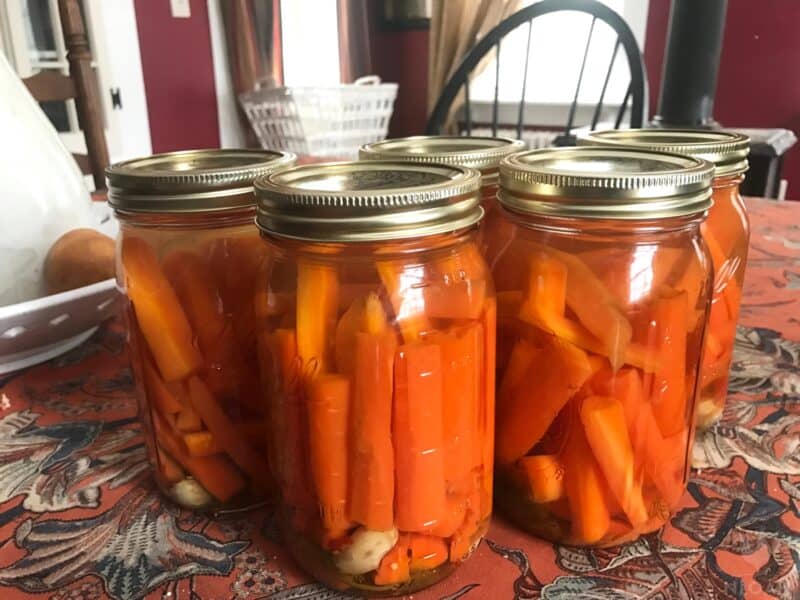
There are lots of ways to preserve carrots, and no matter which way you choose, they’ll still be safe, edible, and delicious.
No matter your skill level or your objectives for your carrots, there’s certain to be a method for you. I’ll tell you about fifteen good ways to preserve your carrots just below.
Table of Contents:
1. Refrigeration
The method of preservation that most of us use. Refrigeration is doubtlessly effective for keeping your carrots crisp and ready to eat or prepare, but you have to do it right.
You don’t want to leave your carrots in a plastic bag and then just toss them in a crisper drawer; that is only going to accelerate rot.
If you take your carrots out of a plastic bag and, instead, wrap them in a gently moistened paper towel, they can stay good in the refrigerator for around 2 weeks.
2. Freezing
Freezing carrots is one of the very best ways to preserve them for a long time, particularly if you plan on roasting or cooking them in the future.
You’re frozen carrots will remain high quality and delicious for about a year. But, it’s a little more involved than just popping them in the freezer.
If you want to freeze carrots, they should be scrubbed clean with greens removed and then blanched. Then you can put them inside a freezer bag and squeeze all the air out before tossing them in the freezer.
You may also slice them up into pieces and leave them flat and freeze them that way…
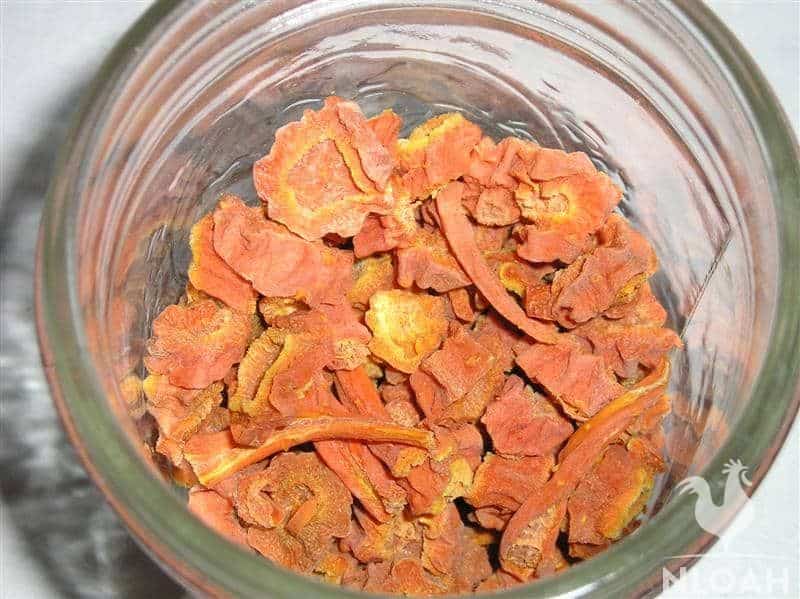
3. Dehydration
Dehydrating your carrots is a convenient way to preserve them, especially if you plan on using them in soups and stews in the future, or adding them to soup mixes.
Carrots have been preserved via dehydration in all kinds of way, and for a very long time. People have dried them in the sun, or even hanged them from strings for the purpose!
But you can dehydrate your carrots in the oven or in a food dehydrator with only a little prep. They should have the greens removed, and be completely clean and then blanched.
After that, into the dehydrator or oven they go. This process usually takes anywhere from half a day to a whole day, and once it’s finished, your carrots will be shrunken and hard, but edible, and they can be rehydrated later.
Dehydrated carrots usually last about a year, perhaps longer if stored properly.
4. Powdering
One of the strangest ways to preserve carrots, but also one of the most versatile, is powdering.
It is exactly what it sounds like: you are reducing your carrots into a fine powder, a powder that is perfect for flavoring and fortifying baked goods, smoothies and lots of other recipes like soup mixes.
The first step in powdering is simply grating and dehydrating your carrots, and I mean really dehydrating them: They should be completely dry!
After that, all you need to do is break them down further in a food processor and then in a fine grinder (or clean coffee grinder) to produce a powder that will store for 6 months or longer, ready to measure and use in your favorite recipes.
5. Freeze-Drying
Freeze-drying is one of the most advanced methods of preservation, and one that works wonderfully for carrots.
A freeze-drying machine converts the frozen moisture in carrots directly into a gas, skipping the liquid phase.
It’s wonderful for preserving nutrition in carrots and also yields an amazing shelf life, at least a decade if properly packed and stored.
The downside to it is that the machine that lets you do it at home is quite expensive, but the benefits might be worth it if you want unbeatable shelf life.
6. Root Cellar
The root cellar has been one of the prime ways to preserving food for ages now, and they are making a comeback as people get more and more interested in self-sufficiency.
You can take fresh carrots right out of the ground, dust them off a little, then pack them in a root cellar with mulch, sand, leaves or sawdust to keep them fresh for months on end as long as they stay cool and dark.
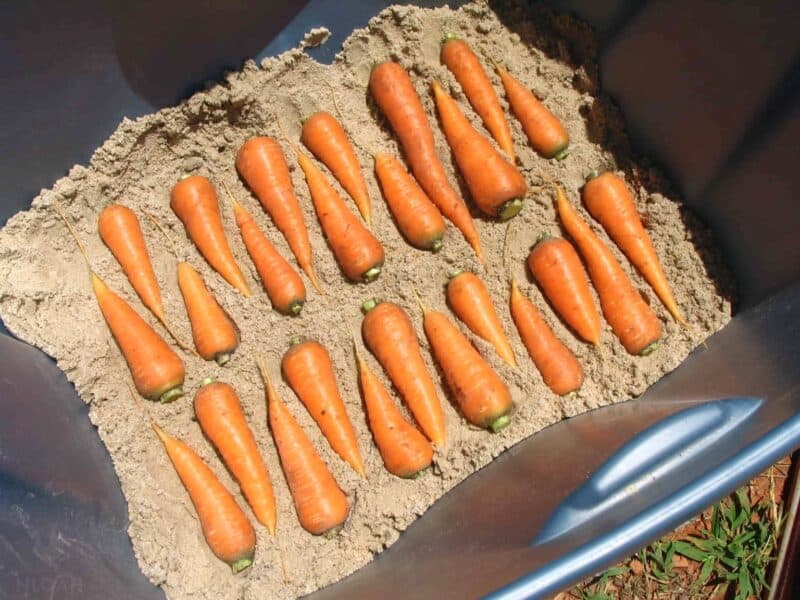
Packing them in sand is particularly effective as it allows the veggies to stay perfectly moist and cool.
This is one of the best ways to preserve carrots with a minimum amount of effort, and without any benefit of electricity or appliances.
7. Canning
Canning carrots might be the most quintessential method of preserving carrots, and it is one that is highly versatile. You may can whole carrots, baby carrots, carrots slices, matchstick carrots, glazed carrots and more.
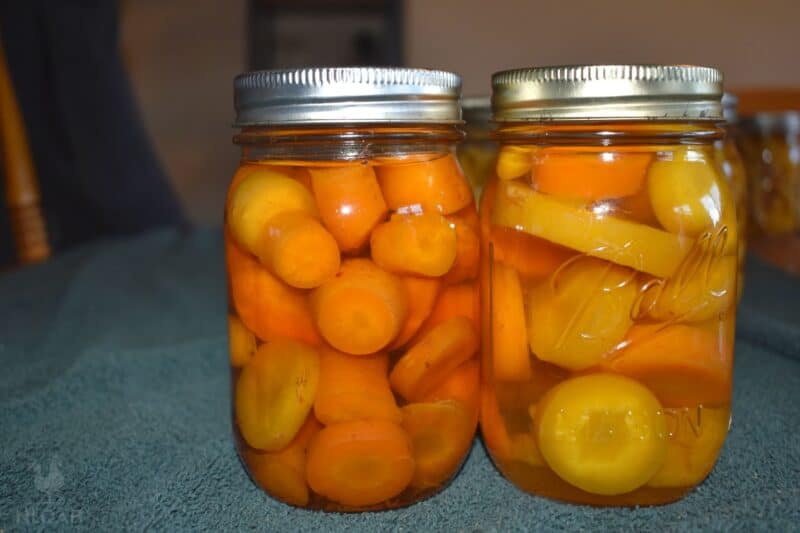
The only downside is that canning is a skill that requires practice to pull off properly, along with the right equipment.
Carrots are a low-acid food and this mandates they begin using pressure canning techniques instead of water bath canning, but canned carrots are ready to use and shelf stable for at least a couple of years.
8. Honey-packing
One of coolest ways to preserve carrots is also one of the oldest. Fruits, vegetables and even meat can be packed in honey to help preserve them, a process very similar to sugaring.
Honey acts as a natural bacteria blocker and barrier against moisture, which makes it a good choice for food preservation as long as you follow the right steps.
Honey-packing can be used either for simple immersion or as a variant with the typical canning described above.
This process works best on high-acid foods, and carrots are not considered a high-acid food but it is still useable and worthwhile- and very tasty!
You should expect anywhere from 3 to 9 months of storage life for honey-packed carrots.
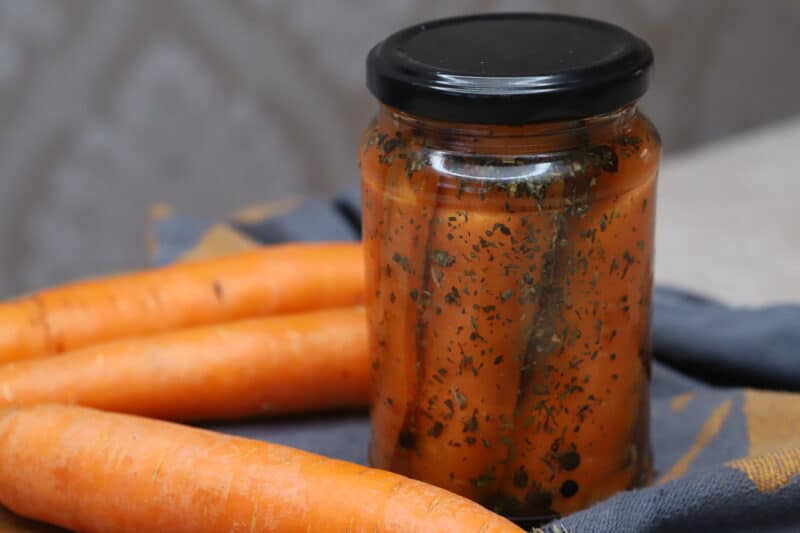
9. Oil Packing
Packing vegetables in oil is a great way to preserve them, and also a way to make them extra tasty for whatever recipes or appetizer boards you want to put together.
Most foods, including carrots, that are going to be oil packed, are cooked first even if they’re only lightly cooked, but then they’re typically packed with herbs and other flavors to produce something unique and truly delicious.
Kept in the refrigerator, you can get three to four months from oil-packed carrots.
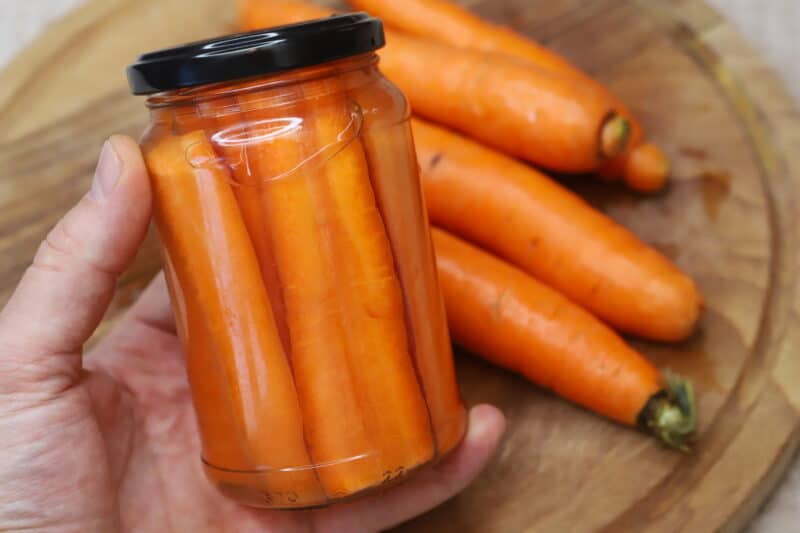
10. Pickling
You probably know that you can pickle all sorts of fruits and vegetables, but have you ever seen pickled carrots? They are kind of rare, but absolutely delicious and are a big favorite in my house.
You can pickle carrots using a variety of pickling brine recipes if thinly sliced or of small diameter.
There are various rations of salt, vinegar, water, and spices you can combine to give your carrots a unique flavor and texture according to your preference, and everyone has their favorite!
Your pickled carrots will not last forever, but done properly, you can get about a month out of them safely in the refrigerator, and they’ll be ready to eat as a side dish or topping the entire time.
This is probably my favorite of all the preservation methods!
11. Fermenting
Fermenting is often confused with pickling, and vice-versa, but the two processes are distinct.
Distinct, even though your homemade fermented veggies are by definition both pickled and fermented!
Fermenting is done using a combination of starter, salt, and water, with your carrots immersed in the solution and then left at room temperature, loosely sealed with a fermenting lid for anywhere from 2 to 10 days.
After that, they’re moved to the fridge where they’ll keep for 3 to 5 months.

12. Water Immersion
This is a lesser-known preservation method that’s quickly coming on as one of the go-tos.
All you need to do is take whole, fresh and unpeeled carrots, greens removed, and cover them completely in water in the refrigerator (not the fridge!).
You can use a large freezer bag or a Tupperware container for the purpose. That’s it! Carrots kept this way will remain fresh for about 30 days. Just be sure to change out the water when it starts looking a little murky…
13. In the Ground
Sometimes the best way to preserve something is not to preserve it at all! I’m not being contradictory: the old-timers knew that carrots would often preserve just fine if you left them in the ground when they were ready to harvest.
If your carrots will stay below 40° Fahrenheit (4.5° Celsius), and the soil is damp but well-drained, they will stop growing and you can simply cover them with a layer of mulch or straw to protect them until you need them.
But don’t try this method if you’re facing a hard freeze or if it is too warm, or if your soil doesn’t drain well because they can and will rot!
14. Clamping
Clamping has nothing to do with putting your carrots in a vise.
It’s very similar to keeping them in-ground as described above, but a clamp is an above-ground structure, of sorts, made from soil and straw, one that farmers have used for centuries to preserve root vegetables for the long haul outside.
You can use this for other veggies too, not just carrots!
15. Ash-preservation
It sounds strange, but wood ash has been used for millennia to preserve foods, including meats, fruits and vegetables.
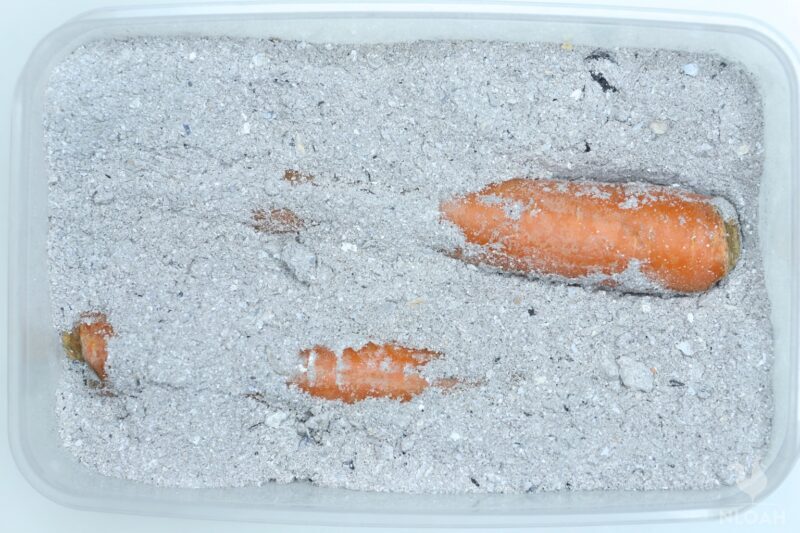
By completely surrounding carrots or other produce in cool, fine, sifted wood ash and then placing them in an airtight container they’ll stay fresh for many months. Just don’t expect any miracles, and be sure to check them periodically and use them up as needed.
The carrots should be raw if you’re going to use this technique, not cooked.
What’s the Best Way to Preserve Your Carrots?
There is no best way to preserve your carrots. It’s totally dependent on your preferences, your skills, your equipment and most importantly, what you’re going to use them for.
If you just don’t want to lose out on a crop of carrots you’ve worked hard for, or paid for, tossing them in the freezer will keep them from going bad and requires very little effort.
Pickling your carrots will let you keep them for several weeks while snacking on them or using them as a topping the entire time.
Freeze-drying produces the absolute best conceivable shelf life and preserves the most nutrients, but it’s very expensive to do at home.
Dehydration is effective and low effort, but significantly changes the taste and texture of the carrots.
I could go on but you get the drift: What matters most is that you learn how to properly preserve your carrots using any method that you choose! Do your homework, practice and then get to it.
Tips for Getting the Best Results
Whatever method of preservation you choose, the following tips will help ensure that you get the best results.
Don’t Peel Them
Carrots depend on their skins to help keep them from drying out and also to protect them from contaminants that could start them rotting.
If you’re freezing your carrots, immersing them, sticking them in a barrel of sand in the root cellar or, of course, leaving them in the ground, you want to leave the skins on.
Keep Carrots Away from Fruits
Many fruits produce lots of ethylene gas as they ripen, and this speeds up the ripening of other nearby fruits and veggies, with bananas and apples being among the worst offenders, but melons are also bad.
Cut the Greens Off of Whole Carrots
If you’re leaving your carrots whole you’ve got to remove those greens. This is because the greens will essentially suck moisture out of the root part of the carrot, causing them to go limp and decay.
Take Store-bought Carrots Out of the Bag
If you bring home a bag of carrots from the grocery store, you have to take them out of that plastic bag. Condensation that forms on the inside of these bags will accelerate rot.
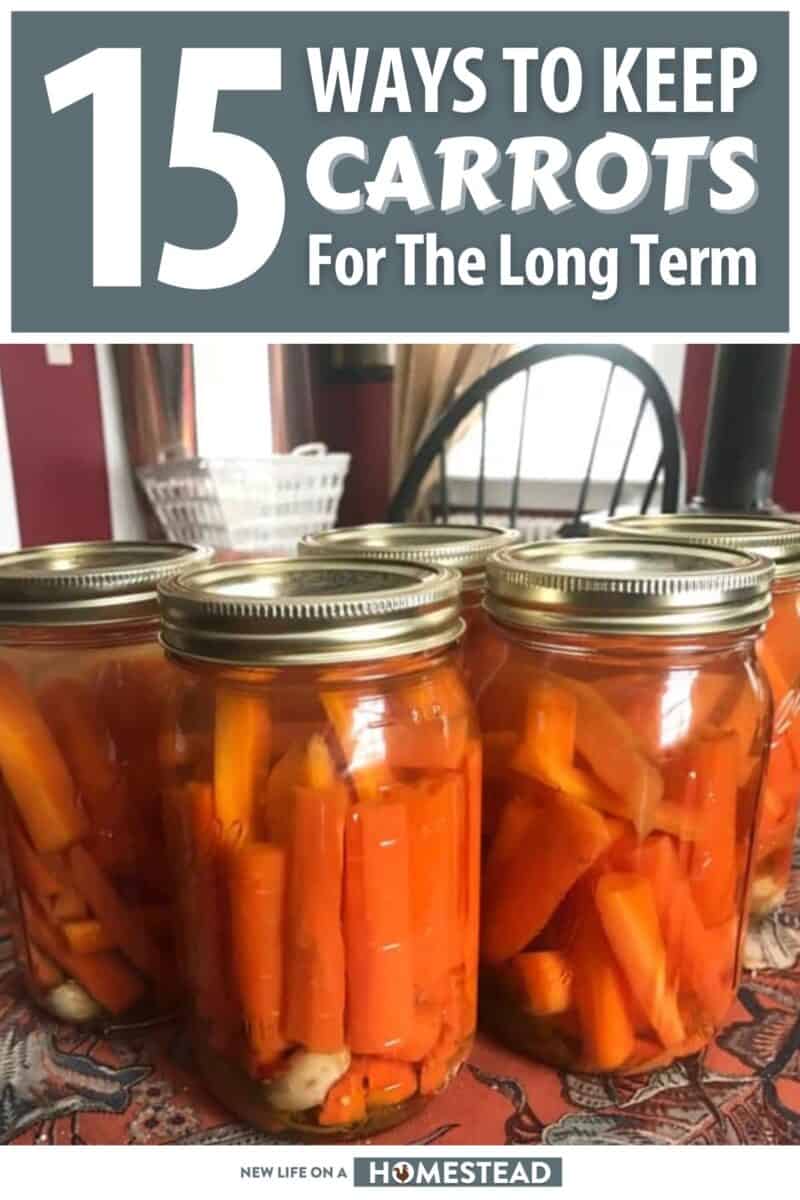
Tom has lived and worked on farms and homesteads from the Carolinas to Kentucky and beyond. He is passionate about helping people prepare for tough times by embracing lifestyles of self-sufficiency.
